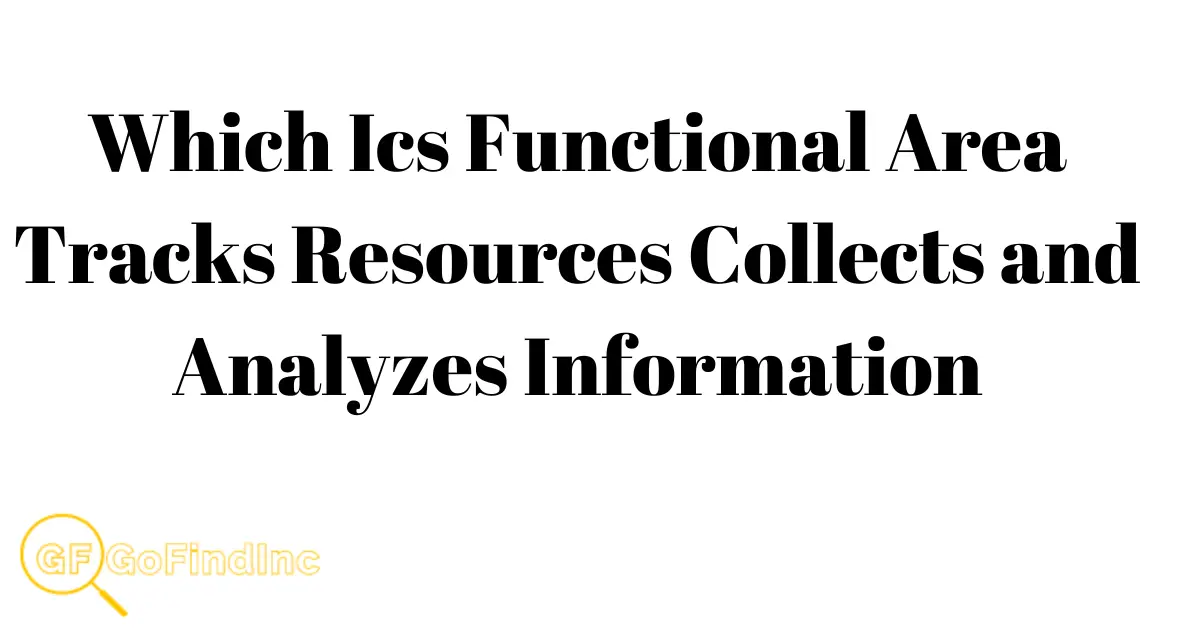In a fast-paced and data-driven world, organizations need efficient systems to track resources and collect and analyze relevant information. A functional area responsible for these tasks plays a crucial role in helping businesses make informed decisions, streamline operations, and achieve their goals.
In this blog post, we will explore the significance of this functional area, its key responsibilities, and the tools and techniques used to optimize resource tracking and information analysis.
What is a Functional Area?
A functional area is a specific division within an organization that focuses on a particular aspect of its operations. It is responsible for carrying out specific tasks, applying relevant skills and expertise, and ensuring the smooth functioning of the larger organizational framework.
One such functional area that has become increasingly important in today’s digital age involves tracking resources, collecting data, and analyzing information.
The Role of Resource Tracking
Resource tracking is an essential function that allows organizations to allocate and manage their resources effectively. These resources can include tangible assets like machinery, equipment, and inventory, as well as intangible resources like personnel, time, and intellectual property.
The primary goal of resource tracking is to have a real-time understanding of the availability, utilization, and performance of the resources. By monitoring and tracking resources, organizations can identify inefficiencies, optimize allocation, and ultimately reduce costs.
Some common resources that are tracked include:
- Inventory: Understanding inventory levels, turnover rates, and demand patterns helps organizations avoid stockouts, minimize excess inventory, and maintain optimal levels to meet customer demands.
- Equipment and Machinery: Managing the maintenance, performance, and utilization of equipment helps prevent breakdowns, optimize productivity, and reduce downtime.
- Human Resources: Tracking employee hours, skills, and performance assists in resource planning, scheduling, and talent management.
The Importance of Collecting and Analyzing Information
Collecting and analyzing information is another critical aspect of this functional area. It involves gathering data from various sources, transforming it into meaningful insights, and using those insights to make informed decisions. This practice is commonly referred to as data analysis or business intelligence and has gained significant importance in recent years.
Data analysis and business intelligence provide organizations with several benefits:
- Improved Decision Making: By analyzing relevant data, organizations gain valuable insights into market trends, customer preferences, and operational performance. Such insights enable better decision-making and strategy formulation.
- Identifying Opportunities and Risks: Analyzing data allows businesses to identify emerging opportunities and potential risks more effectively. This helps organizations stay ahead of the competition and mitigate potential threats.
- Streamlining Operations: Analyzing data helps businesses identify areas of inefficiency, bottlenecks, and waste in their operations. By streamlining processes, companies can optimize their resources, reduce costs, and improve overall productivity.
- Enhanced Customer Satisfaction: By analyzing customer data, organizations can gain a deeper understanding of their target audience. This knowledge enables businesses to tailor their products and services to meet customer expectations, leading to higher customer satisfaction and loyalty.
Tools and Techniques for Resource Tracking and Information Analysis
To effectively track resources and analyze information, organizations rely on a variety of tools and techniques. Some of the commonly used ones include:
- Enterprise Resource Planning (ERP) Systems: ERP systems integrate various business functions and provide a centralized platform for resource tracking, data collection, and analysis. These systems enable real-time visibility into the availability and utilization of resources, as well as generating reports for informed decision-making.
- Customer Relationship Management (CRM) Systems: CRM systems are used to collect and manage customer-related data. By tracking customer interactions, preferences, and purchase behavior, organizations can analyze this data to drive personalized marketing campaigns and improve customer satisfaction.
- Data Analytics Tools: There is a wide range of data analytics tools available in the market, such as Tableau, Power BI, and Google Analytics. These tools facilitate data visualization, statistical modeling, and predictive analytics, helping organizations make sense of large volumes of data quickly and efficiently.
- Supply Chain Management (SCM) Systems: SCM systems help organizations track and manage the flow of goods, information, and funds across the entire supply chain. These systems provide real-time visibility into inventory levels, order status, and delivery schedules, allowing businesses to optimize their supply chain operations.
Conclusion
In this blog post, we explored the role of a functional area that tracks resources, collects data, and analyzes information. We discussed the significance of resource tracking in optimizing resource allocation and reducing costs. We also highlighted the importance of collecting and analyzing information to make informed decisions and drive organizational success.
By leveraging tools such as ERP systems, CRM systems, data analytics tools, and SCM systems, organizations can streamline their operations, enhance customer satisfaction, and stay ahead of the competition. As technology continues to advance, the role of this functional area will become increasingly vital in helping businesses navigate the complex and ever-changing business landscape.
If you want to take your organization’s resource tracking and information analysis to the next level, consider exploring the various tools and techniques available in the market. By investing in the right systems and leveraging data effectively, you can unlock tremendous value, drive growth, and achieve your strategic objectives.

